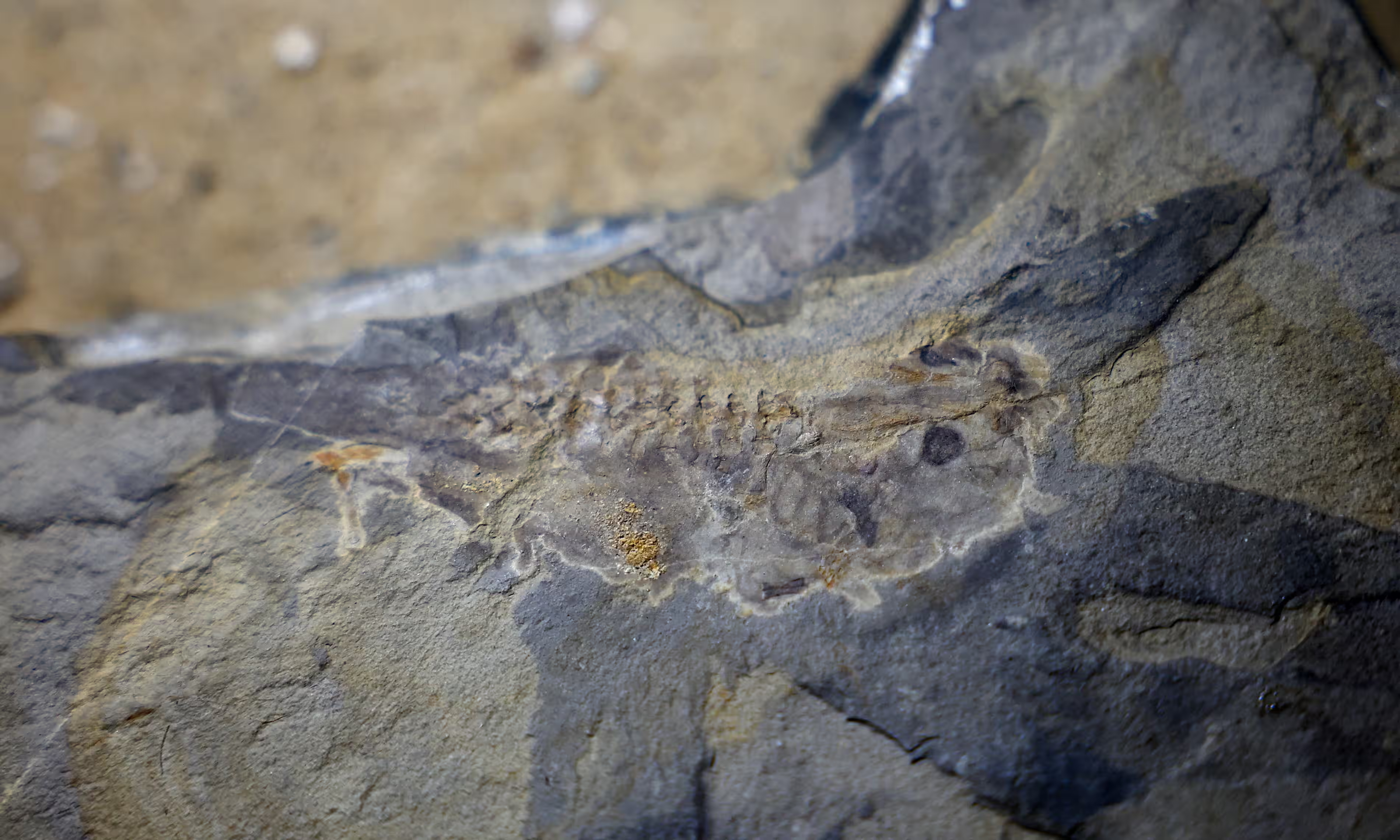For decades, archaeologists and paleontologists have been searching for ancient fossils buried in the ground to uncover clues about what life was like a million years ago.
And let me tell you that recently, an extraordinary ancient fossil that looks like a piece of jewelry was discovered in New York.
Amazing, right?
In a published journal called Current Biology, Luke Parry, a paleobiology professor at Oxford University, revealed that they recently uncovered a fossil perfectly preserved in pyrite, commonly known as fool’s gold.

Pyrite, the most abundant sulfide mineral on the planet, has a bright, sparkling golden look. The fossil was found in Beecher’s Bed, a well-known area for fossils near Rome, New York.
Thanks to its preservation in pyrite, the fossil is golden in color, which makes it sparkle like gold and resemble beautiful jewelry. This also makes the discovery quite rare.
Parry and his research team have identified this fossil as a new species of arthropod called Lomankus edgecombei, which resembles today’s shrimp. This species is a member of the Megacheira group, an extinct group recognized for having a large, modified front leg used to catch prey.

Image Credit: Luke Parry / Yu Liu / Ruixin Ran / Derek Briggs/ Huijuan Mai/ Elizabeth Clark/ Robert O’Flynn
However, unlike other megacheirans, which use their large front legs to grab food, this species has smaller claws with three long, flexible, whip-like tails. This suggests that instead of using these legs to catch prey, it likely used them to explore its surroundings.
It was also found that Lomankus edgecombei doesn’t have eyes, which means it probably used its sensitive legs to find food in its habitat, which was dark and had low-oxygen conditions.
Here’s a fun fact. Did you know that Lomankus is related to modern horseshoe crabs, scorpions, and spiders? It was also revealed that the newly identified species dates back to the Ordovician Period, around 485 to 443 million years ago, and it is believed to have lived on the ocean floor.
Findings of the discovery
Parry started working with these fossils as a postdoctoral researcher at the Yale Peabody Museum.
In 2019, he looked at a fossil for the first time and discovered that arthropods were still evolving, which was surprising since many scientists thought they had gone extinct.
Three fossils were kept at the museum, while two others were donated to Yu Liu, a paleobiology professor in China. These specimens are now part of the Peabody’s collection.
During his research, Parry used CT scanning to examine hidden details of arthropod anatomy. This helped explain why certain features in arthropods evolved, including why they developed limbs that stick out from their heads.

The fool’s gold has revealed details about its body, especially the sensory structures on its head.
Usually, these small features would disappear once the animal died and was buried, but the fool’s gold kept them preserved in stone and filled the small spaces where the body used to be, including its insides.
“I was pretty blown away by how well preserved they were, and having worked on pyritised burrows before; I knew that they would CT scan really well. Preservation in pyrite of this kind is extremely rare. In the last half a billion years there are only a handful of examples of places where this occurs.” Parry said.

The way the structures are arranged on the head looks similar to modern arthropods, which suggests that the appendages might be early forms of insect antennae or the mouthparts seen in scorpions and spiders.
According to the researchers, the discovery of Lomankus edgecombei is important because it helps us understand how ocean life changed 450 million years ago.
It also sheds light on how arthropods evolved their front legs, which they used for sensing their environment and capturing food.
The oldest tadpole fossil ever
Now, before I end this post, here’s another amazing discovery.
The oldest tadpole fossil ever has been found in Patagonia. It shows that frogs have had a tadpole stage for at least 160 million years. However, they’re giants!

Paleontologist Federico Agnolín and his team accidentally found the fossil. They were looking for dinosaur bones at Estancia La Matilde in Santa Cruz, Argentina, but instead of dinosaur bones, they found frogs.
All the frogs they found were adults from the same extinct species named Notobatrachus degiustoi, known as the Jurassic frogs.

The researchers estimate that the fossil is between 161 and 168 million years old during the Middle Jurassic epoch. This makes it around 30 million years older than the previous record. This discovery proves that frogs have had a tadpole stage for a long time.
The tadpoles of Notobatrachus degiustoi were about 16 centimeters (6.3 inches) long.
To compare how huge these tadpoles are, the tadpoles we see today are usually only 1.3 to 4.2 inches long. Image a tadpole as big as a human hand!

The well-preserved soft tissues of the tadpole also show that it had a filter-feeding system, which is still found in tadpoles today.
Pretty cool, right?







